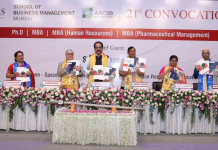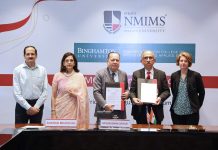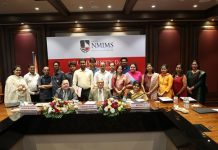 (The Indian scenario and the basics of organ donation)
(The Indian scenario and the basics of organ donation)
Despite the technological advancements the source of human organs is the donation only. Organ donation is one of the greatest medical astonishments of the century which has saved the lives of several patients. The first organ transplant of India was a kidney transplant performed in the 1970s. Currently around 5000 kidneys, 1000 livers, and around 50 hearts are transplanted annually in India, against the need of roughly 2,00,000 kidneys, 50,000 hearts, and 50,000 livers for transplantation each year. In fact there is a tremendous lack of awareness about organ donation in the country and the disparity between the huge demands for the organs and their poor supply is a major concern. If we look at the statistics……
- There is a poor organ donation rate – 0.26 per million in India, compared to some of the better performing countries such as Croatia’s 36.5, Spain’s 35.3, and America’s 26 per million, respectively.
- With 1 per million‑donation rate, India would take care of almost all current demands for organs.
- At a 2 per million‑donation rate there would be no necessity to undertake living kidney donations.
The total organ donation shortage in our country can be met even if only few victims involved in fatal accidents serve as organ donors.
We can categorize the organ donors into three categories:
- Living donors
- Brain death donors or Cadaver donors
- Natural death donors.
When a living person decides to donate his or her organ(s) to someone in need of a transplant is called living donor. They are usually family members or close friends of that person who needs a transplant. They have to fulfil certain medical criteria and have to undergo comprehensive medical testing as required by the particular circumstance before being accepted as suitable donors.
When organs from a brain-dead individual are transplanted into the body of a living recipient is called brain death donor or cadaveric donor. This kind of transplant initially requires the recipient to wait on a list until a suitable organ is available based on the recipient medical profile. The following organs can be donated by a brain death patient: kidney, liver, heart, lungs, pancreas, intestine, tissues, cornea, bones, skin, and veins. A person after his or her natural death can donate their eyes and skin.
Donated organs can remain viable for transplantation for a duration ranging from a few to many hours, although it is best if they are transplanted as quickly as possible after the donation surgery. Typical storage times are 30 h or less for a kidney, <12 h for a pancreas or liver, and <6 h for a heart or for lungs. These times vary because of the relative speed at which deterioration begins in the organ’s tissues.
This is the irony of our nation that due to the lack of awareness in India, the majority of people do not take up this noble cause for the benefit of others. The total number of brain deaths due to accidents is nearly 1.5 lakhs annually. There is a need of two lakh kidneys, 50,000 hearts and 50,000 livers for transplantation every year. Even if 5%–10% of all brain deaths are harvested properly for organ donation, technically, there would be no requirement for a living person to donate organs.
The situation of organ wastage is the most severe in cases of hearts. Due to various issues such as cost and availability of expertise in different cities, hearts are often wasted in India.
Transplantation of Human Organs Act was passed in 1994. It defines about the regulation of removal of human organs and its storage. It also arrived at the regulation of transplantation of human organs for therapeutic purpose and for the prevention of commercial dealings in human organs. The main provisions of the act (including the amendments and the rules of 2014) are as follows: 1. Brain death identified as a form of death process and criteria for brain death for brain death certification defined 2. Allows transplantation of human organs and tissues from living donors and cadavers (after cardiac or brain death) 3. Regulatory and advisory bodies for the monitoring transplantation activity and their constitution defined 4. The government shall maintain a registry of the donors and recipients of human organs and tissues.
Any person willing to donate his/her organs can do so by filling out the donor consent form 1. This is a voluntary act 2. The donor may also approach a transplant center or other organ 3. Donation organizations for a donor card 4. The decision to donate organs could also be done by the lawful custodian 5. Of the body after the death of the patient.
We can help the humanity by spreading awareness in the society about organ donation, by pledging our organs and by motivating our near and dear ones to pledge their organs. Lets be a responsible citizen by performing our Human Social Responsibility and Live beyond life!
Article by, Prof. Dharmendra Sharma
Management Trainer and Visiting Faculty with B Schools in India,
Director, NMIMS Business School Alumni Association
Director, Rotary Club of Bombay West,
President Nominee 2022-23, Rotary Club of Bombay West.
District Chair for Organ Donation Awareness. Rotary District 3141
Peace Volunteer & Member of Peace Committee Rotary District 3141.
Life Member, Public Relations Society of India (PRSI)
Email: sharmadharm@gmail.com





































